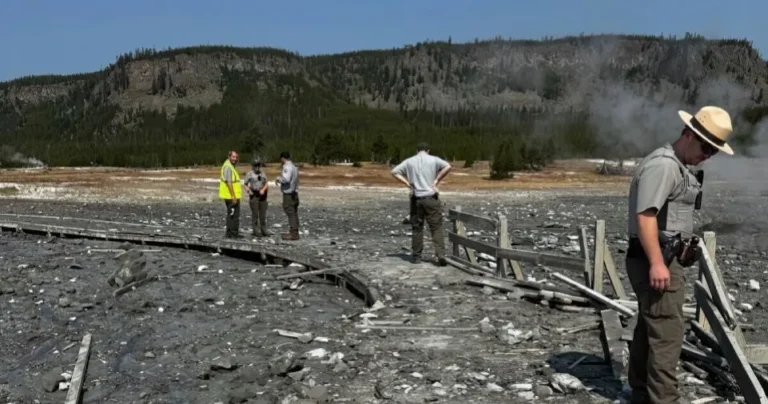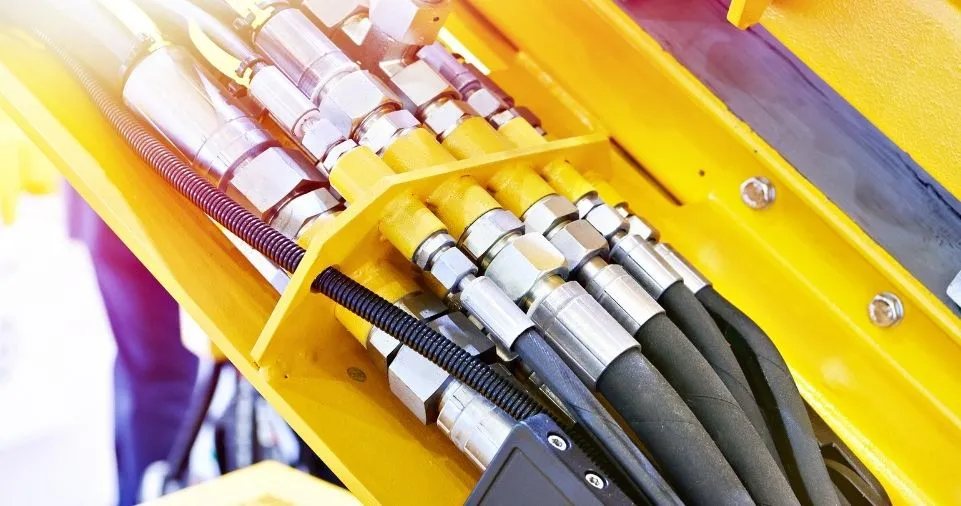Tuesday morning in the Biscuit Basin region northwest of Old Faithful, a hydrothermal explosion in Yellowstone National Park destroyed a boardwalk and threw debris several stories into the air, according to the lead scientist at the U.S. Geological Survey’s Yellowstone Volcano Observatory.
The explosion, described as “small” by Scientist-in-Charge Michael Poland, occurred Tuesday morning around 2.1 miles northwest of Old Faithful, most likely in the Black Diamond Pool in Biscuit Basin.
Poland announced in an informational statement early on Tuesday afternoon that no injuries from the incident had been recorded as of yet.
films of the explosion and its aftermath show debris all over the place and a damaged boardwalk, while films taken by others who saw the event and shared them online showed many persons on the boardwalk near the explosion site.
The boardwalks and parking lot in Biscuit Basin have been temporarily closed for safety. Geologists from Yellowstone National Park are looking into the explosion, but their findings do not point to unusual volcanic activity.
The Yellowstone area is not changing, according to monitoring data. Poland released a statement saying, “Today’s explosion does not reflect activity within the volcanic system, which remains at normal background levels of activity.” “Magma rising towards the surface is not the cause of today’s hydrothermal explosions, nor are they a sign of impending volcanic eruptions.”
According to him, these kinds of explosions are “fairly common” in Yellowstone National Park and occur when water rapidly turns into steam underneath.
ALSO READ:
- Statement from President Joe Biden on Sonya Massey
- NEWS: Sanders on Netanyahu Addressing Congress This Week
- Pa. Gov. Josh Shapiro is a top contender for vice president. What would he bring to the ticket?
- Biden drops out of 2024 race after disastrous debate inflamed age concerns. VP Harris gets his nod
A lesser explosion occurred in Norris Geyser Basin on April 15 and a similar explosion occurred in Biscuit Bay in May 2009. 1989 saw the explosion of Porkchop Geyser in the Norris Geyser Basin.
The U.S. Geological Survey states that hydrothermal explosions may shoot boiling water, steam, mud, and rock up to 1.2 miles into the air. According to a 2018 analysis, there are huge hydrothermal explosions around every 700 years. The research states that at least 25 craters with a minimum width of 328 feet have been found inside the park.
Large hydrothermal explosions are uncommon occurrences in human history, but the possibility of more such catastrophes in Yellowstone National Park in the future is not negligible, the paper states. It is possible to predict that an explosion big enough to leave a crater 100 meters (328 feet) wide happens every few hundred years, given the frequency of massive hydrothermal explosion occurrences during the previous 16,000 years.
The National Park Service reports that after an earthquake in July 2006, Black Diamond Pool erupted with black, murky water and had “several explosive eruptions” in the days that followed. However, eruptions have subsequently become “infrequent.” It is 148.5 degrees Fahrenheit on average.
Early on Tuesday afternoon, the Daily Montanan was directed to the press statement issued by the Yellowstone Volcano Observatory by Yellowstone National Park’s public relations office, which also said that no other information was currently available.
More details will be released when they become available, according to the Yellowstone Volcano Observatory.







